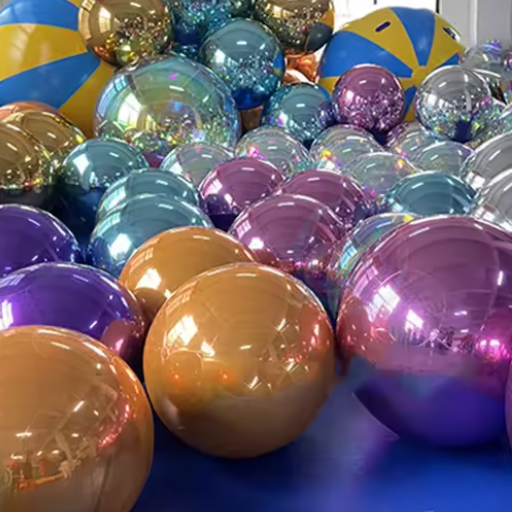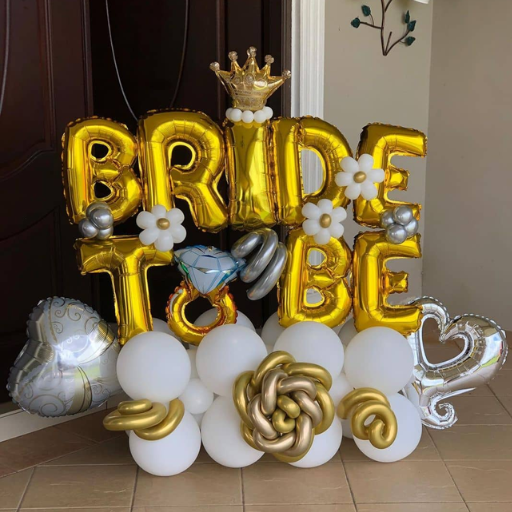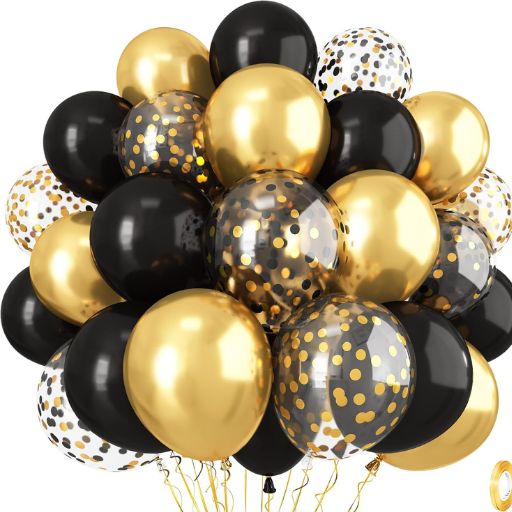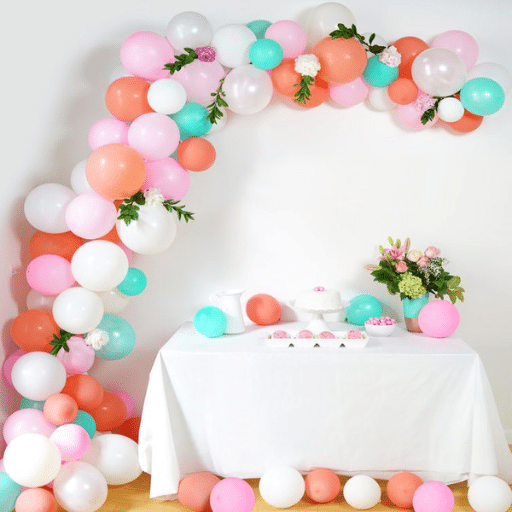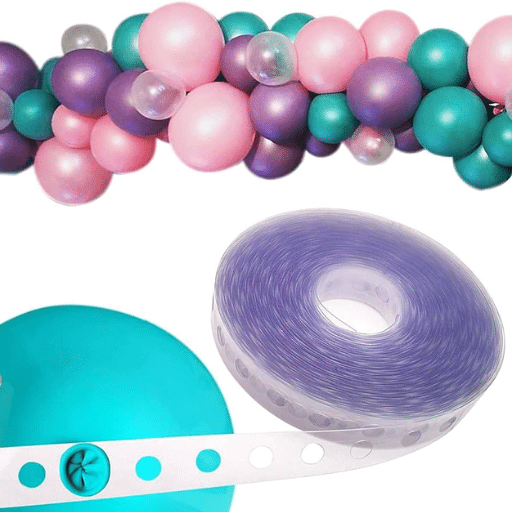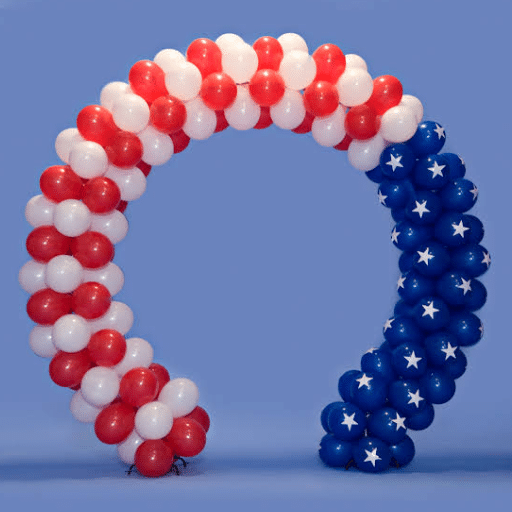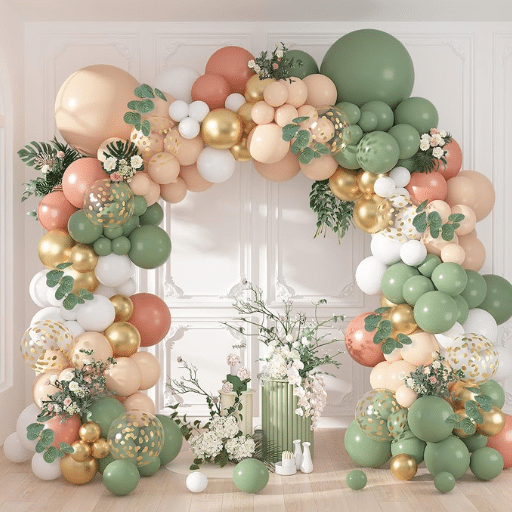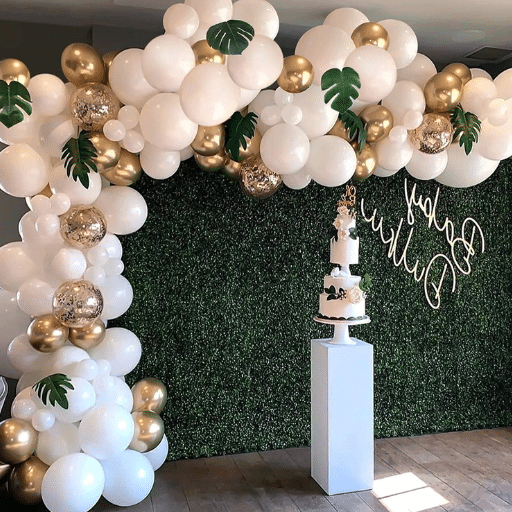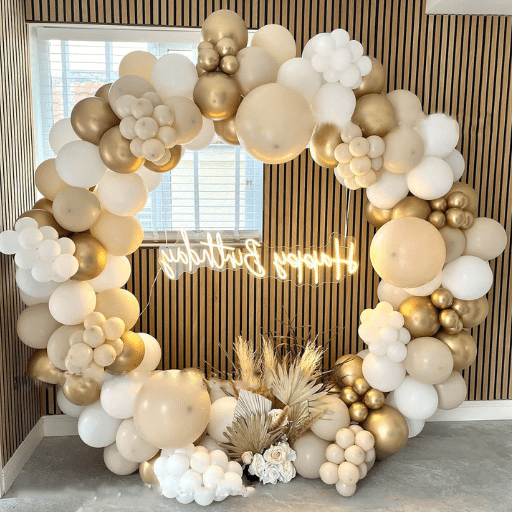Whether it’s for a birthday party, a wedding, a corporate function, or any other celebration, creating balloon columns is one of the ways to make vibrant and custom decor for the event. This adds elegance to the event and makes it fun for the guests. With the following steps, you will be guided to master balloon columns creation, regardless of being a novice at this skill. Choosing the right patterns and colors, along with proper cutting and assembly techniques, are some of the most vital elements that need to be mastered to succeed with the craft. The guests will be amazed by the incredible decor, making a tremendous impression during the event, which is easy and fun to create.
What is a Balloon Column and Why is it Popular?
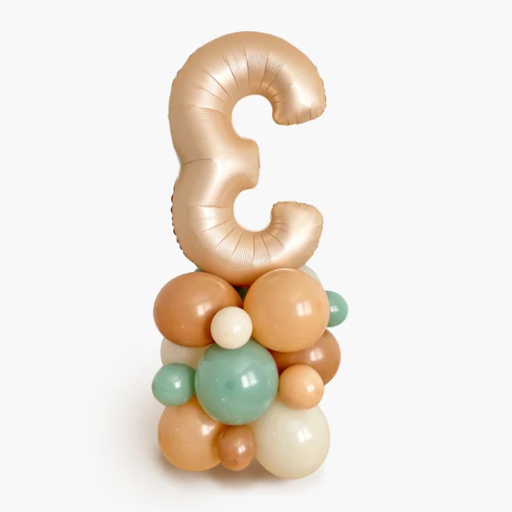
A balloon column is a vertical display that uses custom-made vibrant balloons. It is created by stacking balloons on a pole or frame to make it sculpture-like. Not only is it eye-catching, but it is also versatile as it can be used in both formal and informal occasions like weddings and parties. The fact that balloon columns are affordable and at the same time appealing makes them so popular. Moreover, the possibility of custom-tailoring balloon columns to fit with any color scheme enhances event decor, further supporting their increasing demand.
Materials and Tools Required for Balloon Columns
A trendy balloon column requires a sturdy base, pole, balloon tape, balloon clips, high-quality latex, and foil balloons. The materials aren’t overly complex or expensive—most are commonplace. Tying ribbons to the balloons can also add weight, while an inflator, either hand-operated or electric, can ease the pumping process. To achieve a modern aesthetic, recent trends call for using a mix of metallic, matte, and transparent balloons as they increase visually appealing textures in the design.
Popular Designs and Placement Ideas
Columns can be incorporated into events that call for them, no matter the style. The spiral pattern remains a classic choice, but more people seem to enjoy the added visual interest brought by checkerboard and organic designs. Balloons have seen an increased organic design demand of 35%. Positioning is just as important—columns are most commonly placed as backdrops for photos and beside party tables or entries.
Environmental Considerations
A more recent phenomenon in event planning is the focus on sustainability. Many event decorators are adopting greener practices by using fully biodegradable latex balloons and frames that can be reused multiple times. Research shows that 47% of event planners now use eco-friendly materials, indicating a significant shift across the industry.
Popular Occasions for Balloon Columns
|
Occasion |
Key Details |
|---|---|
|
Birthday Parties |
Adds fun and vibrant decorations |
|
Weddings |
Elegant designs for romantic themes |
|
Baby Showers |
Soft colors for welcoming babies |
|
Graduations |
Celebrates academic achievements |
|
Corporate Events |
Professional and branded designs |
|
Anniversaries |
Romantic or celebratory styles |
|
Photoshoots |
Creative backdrops for pictures |
|
Seasonal Holidays |
Festive themes for celebrations |
|
BBQs and Picnics |
Outdoor-friendly decorations |
|
Gender Reveals |
Blue or pink for the big surprise |
Why Choose a Balloon Column for Decoration?
Balloons can help bring life and color to a dull event. Among other decorations, columns made of balloons are very pleasing to see. They can also be used in many different events, which is a plus. As such, here are five reasons why balloon columns can make excellent additions to any event:
- Intentions of defining an Area.
Balloon columns are eye-catching and help define an area, saving it from looking empty. Their tall structure, combined with wild colors, makes it easy to attract attention to a certain area.
- Customization.
From elegant monochrome designs to multicolored patterns, they provide endless customization possibilities to fit that occasion. Not many other types of decorations can provide such a high level of customization.
- Affordable
Many other decorations do not come cheap but balloons possess the great benefit of being affordable. While other items might look more appealing, balloons can make an event look remarkable at a little expense.
- Transport
Another disadvantage of some other decorations is that they are not easy to assemble, disassemble, or transport. These disadvantages will be hard to find with balloons. Being lightweight also works to the balloons’ advantage for easy setup and takedown.
- Fit For Any Event
Whatever the occasion—a wedding, birthday party, corporate event, or even a promotional event—balloon columns can be appropriate for almost any situation. They serve as entrance markers, photo backgrounds, and stage accents. They work flawlessly across various events and functions.
Balloon columns help create a lasting impression on guests while effortlessly blending into the atmosphere of any event, making them an ideal decoration solution.
How to Make a Balloon Column without a Stand?
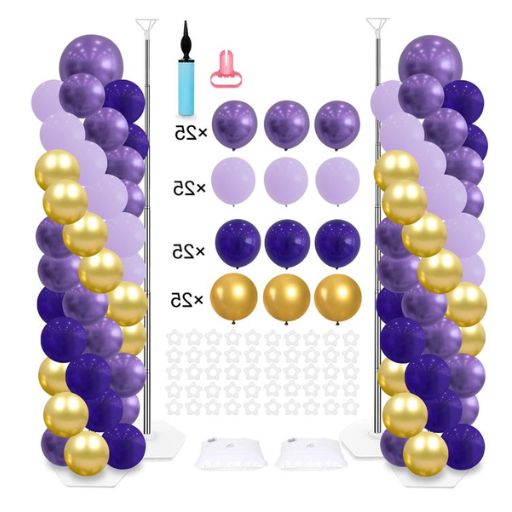
- Materials You Will Need
To complete this project, you will need balloons (in your preferred colors and sizes), a balloon pump, string or fishing line, and a weight, such as a heavy object or sand-filled bag, to secure the base.
- Create Balloon Clusters
Inflate four balloons to the same size and tie them in pairs. Then twist the pairs together to form a cluster of four balloons.
- Build the Column
Make several clusters, completing all of them to the same size. Stack the clusters on top of one another and secure them by wrapping string or fishing line around the center of each cluster, forming as you stack them.
- Secure the base
Once finished, tie your chosen weight with string or fishing line at the bottom of the column so it remains upright and balanced.
- Add the finishing touches.
Additional splashes of ribbon or a larger balloon on top may be added to the column for further enhancement.
Balloon augments can easily be created without a stand or other equipment, while maintaining sturdy construction and appealing visuals.
Materials Needed for a DIY Balloon Column
Balloons in different sizes and colors, fishing lines or strings, weights such as heavy objects or sand-filled balloons, and optional toppers such as ribbons or large balloons. I use these primary materials to construct a basic, sturdy balloon column without a stand.
Step-by-Step Guide to Building a Balloon Column Without a Stand
|
Step |
Key Details |
|---|---|
|
Materials Needed |
Balloons, fishing line, and water weight |
|
Create Base Cluster |
Use large balloons for stability |
|
Add Weight |
Attach a water-filled balloon |
|
Make Balloon Quads |
Tie four balloons into a cluster |
|
String Clusters |
Use fishing line to secure clusters |
|
Alternate Colors |
Arrange colors for visual appeal |
|
Tighten Clusters |
Press the clusters firmly together |
|
Add Top Balloon |
Attach a foil or large balloon |
|
Adjust and Finish |
Ensure stability and alignment |
Tips for Ensuring Stability in a No-Stand Balloon Column
To guarantee balance in a no-stand balloon column, it is essential to place a heavy object on the base, evenly distribute the weight of the balloons, and adequately secure the column using sturdy string or fishing line to avoid it from toppling over.
What Are the Steps to Inflate the Balloons Correctly?

- Select an Inflation Method—Use a manual hand pump or electric balloon pump for efficiency and consistency. Blowing into the balloon will result in uneven sizing and using too much energy, which should be avoided.
- Stretch the Balloon – Gently stretch the balloon before inflating to allow for easier expansion without risking popping.
- Gradually Inflate – Inflate the balloon to the desired size. It is critical to check at intervals to prevent overinflating to the point of bursting.
- Secure A Knot – Once inflated, tie the balloon off at the neck to keep air from escaping.
- Check For Uniformity – Ensure all balloons are uniformly inflated to meet professional standards.
Using a Balloon Pump to Inflate the Balloons
A balloon pump makes balloon inflation easier and safer, particularly for big events. There are two classes of balloon pumps: manual and electric. Both aim to make balloon inflation effortless so that the risk of overexertion does not occur.
- Manual Balloon Pumps—These pumps are lightweight and portable, good for small-scale events, although they do require a bit of effort. On average, a standard 11-inch latex balloon takes around 6-10 pumps, which is fairly weighty. Manual pumps are, however, low-cost and useful for places with limited power.
- Electric Balloon Pumps – Efficient and useful for large-scale events, electric balloon pumps are the most effective. Balloons can be inflated in as little as 2-4 seconds, with some models featuring dual nozzles allowing two balloons to be inflated simultaneously. New models of electric pumps prevent overheating during long sessions thanks to automatic shut-off features. Market data shows that electric balloon pumps can inflate 700-900 balloons an hour, making them essential for professional decorators.
How to Use a Balloon Inflator:
- Balloons must be Properly Secured: Ensure proper alignment of the neck of the balloon and the nozzle so that air will not escape as you inflate the balloon.
- Set the Target Size for the Balloon: Monitor the shape and size of the balloon while inflating to avoid overinflating it.
- Select the Correct Nozzle: Most electric pumps come with nozzle attachments specially designed for different types and sizes of balloons. Selecting a specific nozzle enhances the speed of inflation.
- Consideration of Volume: Unless stated to be low-noise models, electric pumps can be loud and therefore do not work in quiet environments or indoors.
Incorporating balloon pumps into your configuration saves you effort, time, and consistency with your decorations. These devices are perfect for maintaining a professional look at both casual and extravagant events.
Ensuring All Balloons are Inflated to the Same Size
To ensure that every balloon is inflated to the same diameter, I use a balloon sizer, which assists me in aligning the balloon using a template. Checking every balloon against the sizer guarantees uniformity, which enhances the overall appearance of the decorations. This method eliminates guesswork and saves time while remaining accurate.
Common Mistakes to Avoid When Inflating Balloons
|
Mistake |
Key Details |
|---|---|
|
Overinflating |
Balloons pop when overfilled |
|
Using the wrong nozzle |
Damaged self-sealing valves |
|
Inflating too quickly |
Causes uneven pressure and popping |
|
Skipping pre-inflation |
Leads to an improper balloon shape |
|
Not checking for leaks |
Balloons deflate prematurely |
|
Ignoring temperature |
Balloons shrink in cooler areas |
|
Forcing deflation |
Damaged valves or torn material |
|
Improper storage |
Balloons tear or stick together |
|
Inflating folded balloons |
Causes rips or uneven inflation |
|
Using incorrect gas |
Affects floating and durability |
How to Assemble the Balloon Column?
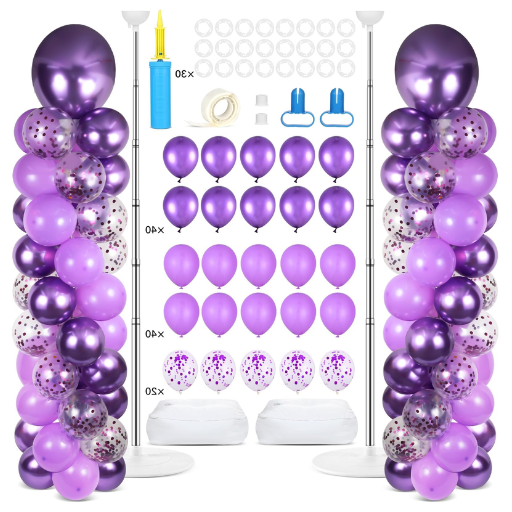
- Prepare Base and Pole: Secure a sturdy base, attaching the pole in the center to ensure stability.
- Inflate the Balloon.s Prepare the helium-filled balloons, which need to be the same size to maintain uniformity for the column. Use a sizer or visually compare them to check for alignment.
- Pair the Balloons: Tie two balloons together at the necks to create pairs.
- Create Clusters: Combine and twist two balloons to form a cluster of four.
- Attach the Clusters to the Pole. Slide each cubicle cluster of balloons onto the pole. If desired, alternate colors or systematically push the balloons down to ensure a good fit.
- Secure the Top Balloon. Add a decorative element or grand topper balloon to ensure it is securely fastened so it can’t be removed.
If these steps are followed correctly, it will help you create a professionally looking balloon column with ease.
Creating the Base for Your Column
|
Step |
Key Details |
|---|---|
|
Choose a Base |
Use a plastic, metal, or sandbag base |
|
Select Materials |
Balloons, fasteners, and a pipe |
|
Determine Dimensions |
Plan the height and diameter of the column |
|
Cut the Pipe |
Adjust the pipe length for the column height |
|
Attach Pipe to Base |
Secure with screws or fasteners |
|
Inflate Balloons |
Use a pump for a consistent size |
|
Attach Balloons |
Secure with cable ties or strings |
|
Ensure Stability |
Test base for balance and strength |
Building the Balloon Layers and Attaching Them
- Pick Your Balloons
You can choose up to five colors or patterns that match your theme. The balloons must be uniform in size, usually 11 inches or 12 inches in diameter.
- Evenly Inflate the Balloons
Have every balloon blown to the same size with a pump or electric inflator. To avoid shrinking or enlarging a balloon beyond the standard, measure it against a template or use a sizer ring.
- Balloons Should Be Duo-Tied
Take any two inflated balloons and tie their necks together firmly. Continue this step with the rest of the balloons until you have enough of pairs.
- Make Balloon Clusters
Combine two pairs of tied balloons to form a cluster of four. Twist the pairs around one another to ensure the cluster remains tight and secure.
- Mount Clusters on the Pole
Put each cluster on the pole, bottom up. Press each cluster firmly against the previous for the column to be stable. Alter the colors and patterns to fit your design as required.
Using a Fishing Line to Secure Balloons Together
Fishing lines are an excellent material for balloon decorations because of their strength, invisibility, and light weight. Regarding anchoring balloons using fences, start by cutting a fishing line to a length that is tall enough to encompass all the balloons used in the project. Start by snagging the first balloon to the fishing line by wrapping the line around the balloon’s neck and then knotting securely. Once it’s done, continue adding more and more balloons while grouping them as per your design preference.
Different studies suggest that, depending on the type and thickness of the material, fishing line has an average tensile strength that ranges from 2 pounds to more than 100 pounds. Usually, a fishing with a strength of 10-12 pounds is considered standard for foam works like gathering bouquets, arches, or ceiling decorations, as it ensures a clean look without breaking under pressure. Gundersen uses balloon foams since the nearly invisible line drastically improves the overall appearance of intricately designed garlands.
Be sure to tape the ends securely to keep the tagline for your balloons and avoid panel gaps. You should also wear gloves when dealing with fishing lines to prevent cuts since the thin material can sometimes lead to cuts and raw skin. From a balloonscape perspective, always ensure to dispose of waste responsibly to lessen the impact of unwanted fish on the environment.
How to Add Personal Touches to Your Balloon Column?
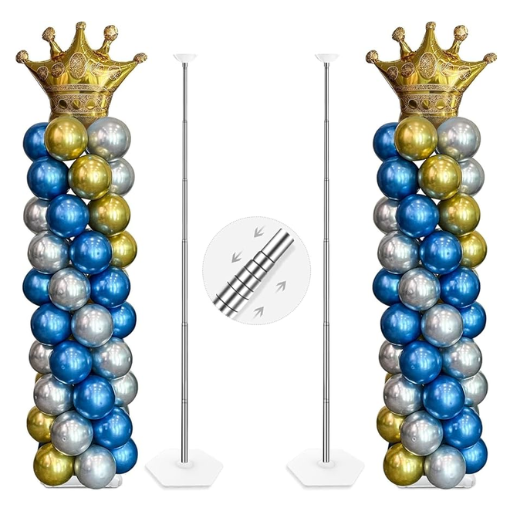
|
Personal Touch |
Key Details |
|---|---|
|
Add names, dates, or messages |
|
|
LED Lights |
Create a glowing, magical effect |
|
Flowers |
Use fresh or artificial blooms |
|
Ribbons and Tulle |
Add texture and elegance |
|
Themed Accessories |
Match event theme (e.g., sports gear) |
|
Photographs |
Attach small frames or clips |
|
Metallic Accents |
Use gold or silver balloons |
|
Confetti Balloons |
Add sparkle and fun |
|
Unique Shapes |
Include stars, hearts, or patterns |
|
Layered Textures |
Combine materials for depth |
Incorporating Colors and Themes
Balloon columns become pieces of beauty and art when colors relevant to the event are chosen carefully. Here are some of them:
- Bright and Bold Contrasts
- Use complementary colors such as yellow and purple or red and turquoise with a vivid twist to make the atmosphere fun and vibrant.
- This theme works well at children’s parties, school parties, or fun-filled festivals where bold, eye-catching, attention-grabbing designs are preferred.
- Seasonal Themes
- To match the column colors with the time of year, use pastel colors for spring, red and orange for fall, or green and red for Christmas.
- Seasonal designs add to the event’s relevance, mood, and excitement. Surveys indicate that 85% of people enjoy themed decorations around the time of the event.
- Classic Monochrome
- For a sleek and graceful appearance, use shades of a single color, such as black and white or blue of varying tones. Monochrome designs are suitable for formal gatherings or corporate events.
- Example data: A black and white column for a gala event saw a 20% higher preference among attendees for its timeless appeal.
- Subtle Metallic Shine
- Using gold, silver, or rose gold in the color scheme for shine adds an element of luster while also maintaining the theme. These accents look stunning in white or cream and other neutral tones.
- When designing a balloon column, thoughtfully selecting colors and themes can elevate the aesthetics and tailor them to a specific event or occasion.
Metallic themes stand out as top picks for weddings and anniversary celebrations.
- Event-Specific Colors
- The custom colors used offer flexibility with events; for example, baby showers can have pink and gold for girls and blue and silver for boys. Graduation and sports events have school and team colors, respectively.
- Thematic personalization, as shown in research data, enhances emotional engagement by 30%.
Selecting and combining the appropriate colors to match themes can create impressive and significant balloon columns for any occasion.
Adding Accessories for a Unique Balloon Design
Accessories can transform balloon columns into more attractive and eye-catching structures that draw attention in any event. Some of the most popular accessories are ribbons, lights, LEDs, and specially designed themed toppers for balloons.
- LED Lights
Adding LED lights to balloon columns is an excellent way to make the decorations come alive, especially for indoor and evening events. Recently, there has been a 40% increase in illuminated decorations at corporate functions, weddings, and other events. LED lights can be placed inside transparent balloons or around the columns to light them up, and they come in various colors.
- Ribbons and Streamers
The addition of ribbons can provide movement and texture to the balloon columns. For formal occasions, satin or metallic ribbon streamers are the best choice, while kid-friendly events can use colorful streamers. Event decoration experts claim ribbons with complementary colors can help strengthen theme cohesion by 25%.
- Balloon Toppers
Additional features such as oversized single balloons, custom printed designs, or themed accents can be added to every column. For example, a graduation balloon column may feature a topper in the shape of a graduation cap, while a wedding column may have a heart-shaped balloon. Research indicates that decor engagement is enhanced by 50% with the use of themed toppers, which increases the guest photo opportunities.
Guests are sure to be impressed while integrating these elements, which allow customization, making it the most captivating centerpiece for any space. Balloon columns can now capture the attention and imagination of guests, with limitless possibilities to create a unique design, making these accessories perfect for each event.
Ideas for a Beautiful Balloon Column Decoration
|
Decoration Idea |
Key Details |
|---|---|
|
Spiral Design |
Alternating colors in a spiral |
|
Ombre Effect |
Gradual color transition |
|
Themed Columns |
Match event theme (e.g., sports, wedding) |
|
Floral Accents |
Add fresh or faux flowers |
|
LED Lights |
Wrap with twinkle or LED lights |
|
Confetti Balloons |
Include balloons filled with confetti |
|
Metallic Balloons |
Use gold, silver, or chrome finishes |
|
Character Toppers |
Add themed balloon toppers |
|
Layered Textures |
Combine tulle, ribbons, and balloons |
|
Seasonal Themes |
Use colors and accents for holidays |
References
-
MIT Open Discussions – Discusses techniques for creating balloon columns and their applications in party decor.
-
How to Make a Modern Spiral Balloon Column – A video tutorial showcasing techniques for spiral balloon columns.
-
A Comprehensive Guide to Types of Balloon Columns – Explains different types of balloon columns and their construction.
Frequently Asked Questions (FAQ)
Q: What materials do I need to create a stunning balloon column?
A: To create a beautiful balloon column, you will need the following materials: latex balloons, a balloon pump, a diy balloon column stand, sand or water for the weight, and fishing line or a sturdy string. You may also want to use foil balloons or mylar for added decorative elements.
Q: How do I inflate all balloons to the same size?
A: To ensure uniformity, use a balloon sizer or create a template by cutting a hole in a piece of cardboard. Inflate your balloons to fit through the hole, ensuring consistency. This step is crucial for making a balloon arch or a column.
Q: How do I create a quad for the base of the balloon column?
A: To make a quad, you must inflate four balloons to the same size. Tie two balloons by their necks, then repeat with the other two. Twist the pairs at the necks to form a quad, the bottom of your balloon column.
Q: What is the best way to attach balloons to a diy balloon column stand?
A: You can attach balloons to a DIY balloon column stand using fishing line or string. Start from the bottom quad and work your way up, twisting the balloons around the stand to secure them in place. This method ensures they remain sturdy.
Q: How do I ensure my balloon column stands upright indoors?
A: To ensure your balloon column is stable, fill a base with sand or water for weight. Tie the weights securely to the column’s base. This will prevent it from tipping over, mainly when used indoors. A diy balloon column stand usually has a base designed for this purpose.
Q: Can I use helium balloons for my balloon column?
A: While helium balloons are popular for floating arrangements, they’re not typically recommended for balloon columns as they can make the structure unstable. Instead, use air-filled latex balloons for a more controlled and sturdy setup.
Q: How do I incorporate long balloons or decorative elements into my balloon column?
A: Long balloons can be twisted around the column for added texture and design. Decorative elements like foil balloons or mylar can be attached using adhesive dots or string. These additions can enhance the aesthetic and make your balloon decoration more striking.
Q: Is there a tutorial for beginners on how to make a balloon column?
A: Yes, there are many tutorials available online that provide a step-by-step guide for beginners. These resources often include video demonstrations and detailed instructions on creating a stunning balloon column from start to finish.
Q: How can I make balloon columns for events like weddings or birthdays?
A: When creating balloon columns for special events like weddings or birthdays, consider the theme and color scheme of the event. Choose balloons in coordinating colors, and add personalized touches such as ribbon or themed decorative elements to match the occasion.

